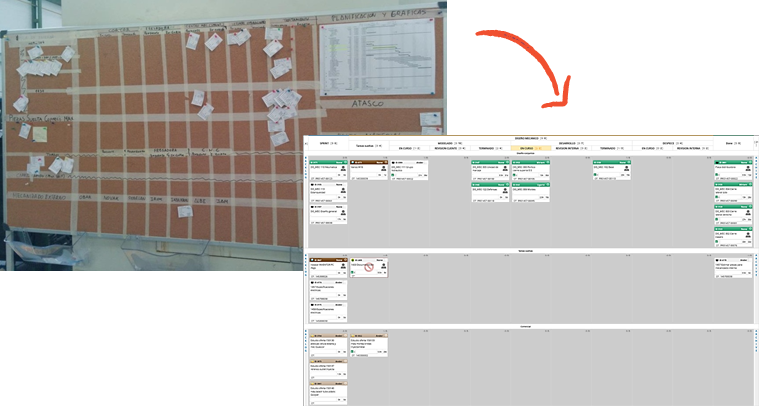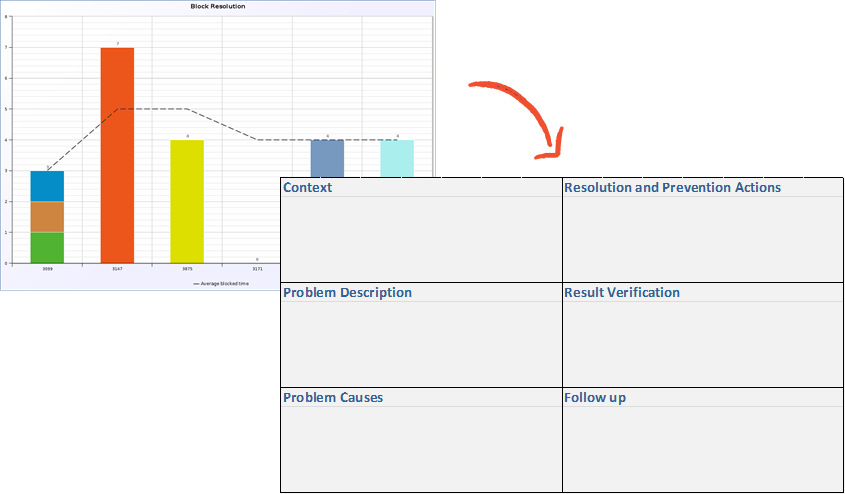A year ago I undertook a journey along a path both known and unknown. Aitor Eguren, General Manager of Somabe, aspired to demonstrate that a company, no matter how small it was, could work as a great company, and asked me, if I could help them.
Quite a challenge for me!
What made me hesitate for a while was that Somabe was an industrial engineering company, a domain that I knew only from books like The Goal and some TV programs. But one has to accept a challenge to learn something new, right?
The first step for Aitor was to improve their project management.
You might already think that project management is the same in all the fields – planning and monitoring of time, budget, risks, equipment, etc. Yes and no.
Partially developed products or late deliveries are not accepted
Somabe’s customers, naturally, require predictable delivery. Moreover, they often impose the hand-over date. They expect competitive prices and good quality machines. Therefore, seeing a GANTT chart and getting fixed date and budget is essential for conveying confidence to them.
The interesting aspect comes from the nature of Somabe’s projects. They develop and produce special machines for the automotive industry. This means that each machine (each project) is unique, not repeated, and its design always involves a certain level of uncertainty.
Which is the best method for estimating precedents?
Do you commit to deliver always on a fixed time and budget?
How do you estimate the price as to make sure that the customer does not chose your competitor and at the same time you get enough profit to be able to develop further the business?
Add to this the variation caused by the purchase of materials and components and the outsourcing of some parts production.
Moreover, the dependencies between suppliers have to be managed daily, keeping an eye on the deadline when everything has to be obtained and integrated without any failure, and delivered to the customer.
How do you see it?
Another interesting point (for the software engineers) is that the scope cannot be negotiated. Partially developed machine is not accepted.
And, if this were not enough, as Somabe is a small company, the same people, tools and facilities are shared in all projects.
Aitor has a solid knowledge base of management methods; he is a strong advocate of Scrum and convinced that developing people is essential for company’s success.
Nevertheless, they are often in situations of
- Delayed projects
- Working overtime to meet deadlines
- Stressful environment
- Important personal dedication
We need multi-project management practices that facilitate meeting
deadline and budget without overburdening the people.
Somabe’s approach
One managing such a complex context cannot afford any oversight or waste. The best approach is to make all people track and take care of the work. Therefore, we focused on four key points:
# 1 Visualize the work stream
First using physical boards, then by means of kanbanize, a kanban tool. This practice helps everyone involved in a project quickly see and understand the status of the work in real time, what is blocked, what is lagging behind expected date, who needs help to resolve a problem, who is overloaded, etc.
Visual management brings lots of advantages and perhaps one of the most valuable is that it gives a clear direction for the entire team’s actions. We stop deluding ourselves that doing something (being busy) is equivalent to getting forward with the project and focus on results and delivering value.
# 2 Remove impediments to make work flow
It is surprising the number of reasons that stop job execution, inhibiting the workflow: the work in process that exceeds team’s capacity, urgent tasks, large jobs that take too much to be finished and impede other tasks’ progress, lack of complete information, delays in responses from stakeholders, defects, non-conformities, etc. etc. All these in addition to the well-known thieves of time, such as phone, email and internet.
Identifying and analysing impediment causes, and defining effective actions saves valuable time and effort for each team and project.
# 3 Make realistic planning
In a situation in which
- Several projects are carried out in in the same time,
- Project work is conducted by different teams and suppliers, with a high level of parallelism and dependencies, and
- A large part of the tasks are performed for a first time
it is difficult to apply traditional planning methods (such as PMBOK and CMMI) that require an estimate of size / complexity and effort of tasks to deduce project duration.
Therefore in Somabe we apply Little’s Law to obtain a realistic forecast for the elapsed time for each project phase without the need to make a detailed estimation of each individual task.
# 4 Involve people in defining solutions
From the very first moment of my work with Somabe I got it clearly that the objective was not to correctly implement a project management method. It was about implementing a correct solution for the company.
How to make sure that we do not miss anything and we take the right actions on time? – We involve the people who do the work in defining the processes, the criteria for task completion, interruption identification, data analysis and determining appropriate actions.
4 steps that will allow you sleep better
If you’ve read up to this point, it’s because you also want to get good results and your projects status disturbs your sleep.
To lower the stress at the workplace and celebrate the delivery of value on time depends on you and your team.
These 4 steps can only help you achieve them:
- Make a team meeting
- Visualize your workflow
- Start measuring and analysing delivery times and flow impediments
- Plan based on actual data.
For more details about Somabe’s experience, read Aitor Eguren’s blog (in Spanish)




